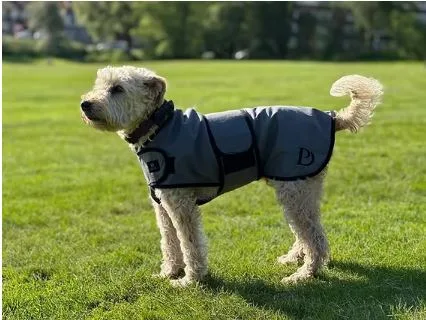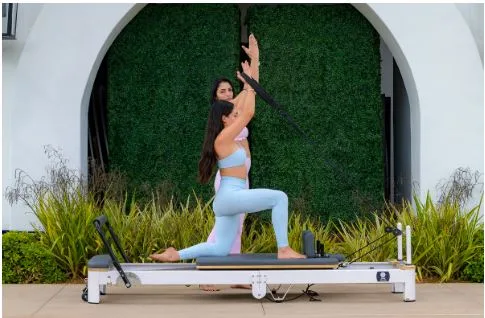Heatwaves & Hounds: How Ice Vests Keep Your Dog Cool Without Stress
Triple-digit days aren’t just uncomfortable for dogs—they’re dangerous. Unlike us, dogs can’t cool off efficiently through sweating. They rely on panting, shade, and your good planning. That’s where an ice vest for dogs can make all the difference: it provides consistent, gentle cooling so your pup can stay safe and enjoy being outside without turning every walk into a heat battle.
Below, you’ll learn how cooling vests work, how to choose the right one, and the best ways to use one so your dog stays calm, comfortable, and—most importantly—cool.
Why Heat Hits Dogs So Hard
Dogs overheat faster than people because they:
- Pant instead of sweat. Panting helps, but it’s limited—especially in humid climates.
- Carry a fur coat year-round. Even short-haired breeds retain heat.
- Get excited. Play, training, and even stress can nudge body temperature up.
Watch for early signs of heat stress: extra drooling, rapid panting, lethargy, unsteady movement, or warm gums and ears. If you notice these, act quickly—rest in shade, offer cool (not icy) water, and apply evaporative cooling to the belly, armpits, and groin. When in doubt, call your vet.
What Exactly Is an Ice Vest for Dogs?
Despite the name, most “ice vests” don’t pack literal blocks of ice. The term commonly refers to dog cooling vests that use one of three technologies:
- Evaporative vests. You soak the vest in water, wring it out, and the fabric releases cool vapor as it dries—like a swamp cooler for your dog. Lightweight and simple, great for dry climates.
- Gel or ice-pack vests. These include reusable gel inserts you chill in the fridge or freezer. They offer stronger, steadier cooling for a set period—useful for humid places where evaporation is less effective.
- Phase-change material (PCM) vests. PCM inserts “freeze” at a comfortable temperature (often around 58–65°F / 14–18°C), pulling heat away without getting uncomfortably cold. They recharge in ice water or a fridge and provide predictable cooling.
When people say ice vest for dogs, they usually mean gel/ice-pack or PCM styles—but all three types aim for the same outcome: lower your dog’s surface temperature and reduce the overall heat load, calmly and consistently.
How Cooling Vests Reduce Stress (for You and Your Dog)
A well-chosen cooling vest helps in three big ways:
- Gentle, hands-off cooling. Instead of stopping every five minutes to soak your dog’s fur or hunt for shade, the vest creates a portable microclimate that works while you walk, train, or travel.
- Less panting, less anxiety. Many dogs get restless when they’re too warm. A vest can keep them within a more comfortable range so they focus better and feel safer.
- Predictable routine. Slip on the vest before a midday potty break or a quick car ride, and you’ve already reduced the risk of overheating—without a lot of fuss.
Choosing the Right Vest: A Quick Buyer’s Guide
Not all cooling gear is created equal. Here’s how to evaluate an ice vest for dogs before you buy:
- Climate check.
- Dry heat (Phoenix, Denver): Evaporative vests excel—light and effective.
- Humid heat (Florida, Gulf Coast): Consider gel/ice-pack or PCM inserts for dependable cooling.
- Duration.
- Short errands or quick walks: Evaporative or gel inserts are usually enough.
- Long outings or sports: PCM vests deliver steadier cooling over time; bring spare inserts.
- Fit and coverage. Look for broad coverage over the back and sides with adjustable straps at the chest and belly. A snug-but-not-tight fit ensures good contact for heat transfer.
- Weight. Cooling inserts add heft. If you have a small dog, weigh the vest (with inserts) against your dog’s size and health. Aim for “barely noticeable”, not “workout gear”.
- Ease of reload. Can you swap inserts quickly? Is it easy to re-wet on the go? Fewer steps mean you’ll use it more consistently.
- Visibility and build. Light colors reflect heat; reflective trim helps with sunrise/sunset walks. Durable stitching and soft linings prevent chafing.
Sizing and Fit: Don’t Skip This Step
Measure your dog’s girth (chest), neck, and back length and check the brand’s size chart. When the vest arrives:
- Adjust straps so you can fit two fingers under the fabric.
- Check that it doesn’t restrict shoulder movement or rub the armpits.
- Let your dog walk, sit, and turn in it—then reassess the fit.
A well-fitted ice vest for dogs should stay put without bouncing or sliding, and your dog should move naturally.
Safe Use: Best Practices for Hot Days
Cooling vests are helpful, but they’re not a free pass to ignore the weather. Follow these guidelines:
- Pre-cool smartly. For gel or PCM vests, chill inserts per instructions—don’t over-freeze beyond recommendations, and never place hard, sharp ice directly against your dog’s skin.
- Introduce it calmly. Start indoors. Let your dog sniff the vest, reward, then drape it briefly. Pair it with treats and short wear sessions so the vest predicts fun, not fuss.
- Time your outings. Even with a vest, avoid the peak heat window (typically 11 a.m.–4 p.m.). Early mornings and evenings are still best.
- Hydration still matters. Offer frequent water. For long walks, bring a collapsible bowl and take shade breaks.
- Surface check. Hot pavement can burn paws. If you can’t hold your hand on the surface for 7 seconds, it’s too hot for paws—even with a cooling vest.
- Monitor continuously. Panting is normal; frantic panting, glassy eyes, or wobbliness are not. If anything looks off, stop, seek shade, and cool your dog with water on the belly and inner thighs. Call your vet if symptoms don’t resolve quickly.
Training, Sports, and Working Dogs
For active dogs—agility, hiking, SAR, or obedience—heat management is part of the training plan. A dog ice vest can:
- Keep arousal levels from tipping into distress during warm-up and cool-down.
- Maintain focus in sunny rings or fields.
- Provide recovery cooling between runs without cold-shocking muscles.
Pro tip: Have two sets of inserts so one can chill while the other is in use. Rotate during breaks for steady comfort without interrupting your flow.
Special Considerations for Flat-Faced and Senior Dogs
Brachycephalic breeds (Frenchies, Bulldogs, Pugs), seniors, overweight dogs, and dogs with heart or respiratory issues need extra care. A cooling vest can help, but consult your vet if your dog has health concerns. Keep sessions very short, avoid midday heat, and be aggressive about shade, rest, and hydration.
How Long Does Cooling Last?
It depends on the vest type, outside temperature, humidity, sun exposure, and your dog’s activity level:
- Evaporative vests: Often 30–90 minutes before needing a re-soak (quicker in very dry air).
- Gel/ice-pack vests: Commonly 30–60 minutes, sometimes longer, before inserts need a swap or recharge.
- PCM vests: Typically 1–2 hours of stable cooling per set of inserts, then recharge in cool water, the fridge, or a cooler with ice.
Plan around your dog, not the label. The first few outings will teach you how long you get in your conditions.
Safety Myths, Busted
- “Cooling vests make dogs too cold.” Quality vests aim for comfort-zone temps, not ice-bath shock. Follow the product instructions, use the right layer under/over as directed, and monitor your dog.
- “If my dog wears a vest, midday hikes are fine.” Hard no. Vests reduce risk; they don’t erase it. Heatstroke can still happen in extreme conditions.
- “Any vest works the same.” Materials, design, and cooling tech differ. Match the vest to your climate and your dog’s size and activity level.
Alternatives and Add-Ons for Maximum Cool
Stack your cooling strategy for best results:
- Shade + airflow. Portable shade tents, fans on patios, or breezy rest areas can make a big difference.
- Cooling mats. Great for car crates or resting between play sessions.
- Wet bandanas or belly coolers. Target high-heat areas on the body.
- Rinse breaks. Lukewarm hose or misting fans can extend evaporative vest performance.
- Route smarts. Plan shady paths and grass over asphalt; bring water and schedule breaks.
Quick Start: Your First Week with an Ice Vest
- Day 1–2: Acclimate indoors. Let your dog wear the vest for 5–10 minutes while you play or train; reward generously.
- Day 3–4: Short outdoor tests. Early morning, 10–15 minutes with the vest; observe panting and behavior.
- Day 5–7: Dial in timing. Note how long the vest stays effective in your conditions. Adjust your walk length or bring spare inserts as needed.
By the end of week one, you’ll know how to deploy your ice vest for dogs with minimal fuss and maximum benefit.
FAQs
Will my dog tolerate the weight?
Most medium and large dogs do fine; toy breeds and seniors may need lighter options. Try the vest at home first and watch for signs of fatigue.
Can I use a vest in the car?
Yes—cooling vests help during short drives, especially if the car warms up at stops. Still, never leave a dog alone in a parked car, even with a vest.
Should the vest be wet or frozen?
Follow your vest type. Evaporative models must be wet. Gel or PCM inserts should be pre-chilled per instructions—typically fridge-cold or lightly frozen.
Can my dog swim in it?
Evaporative vests can get waterlogged and heavy; gel/PCM inserts can shift. Remove the vest for swimming unless the manufacturer says otherwise.
The Bottom Line
Summer isn’t canceled; it just requires a smarter plan. With the right ice vest for dogs, you can lower your pup’s heat burden, ease anxiety in the sun, and bring back those happy tail-wags on hot days. Pair the vest with smart timing, hydration, and frequent breaks, and you’ll have a low-stress, high-comfort routine that keeps your best friend safe all season long.




